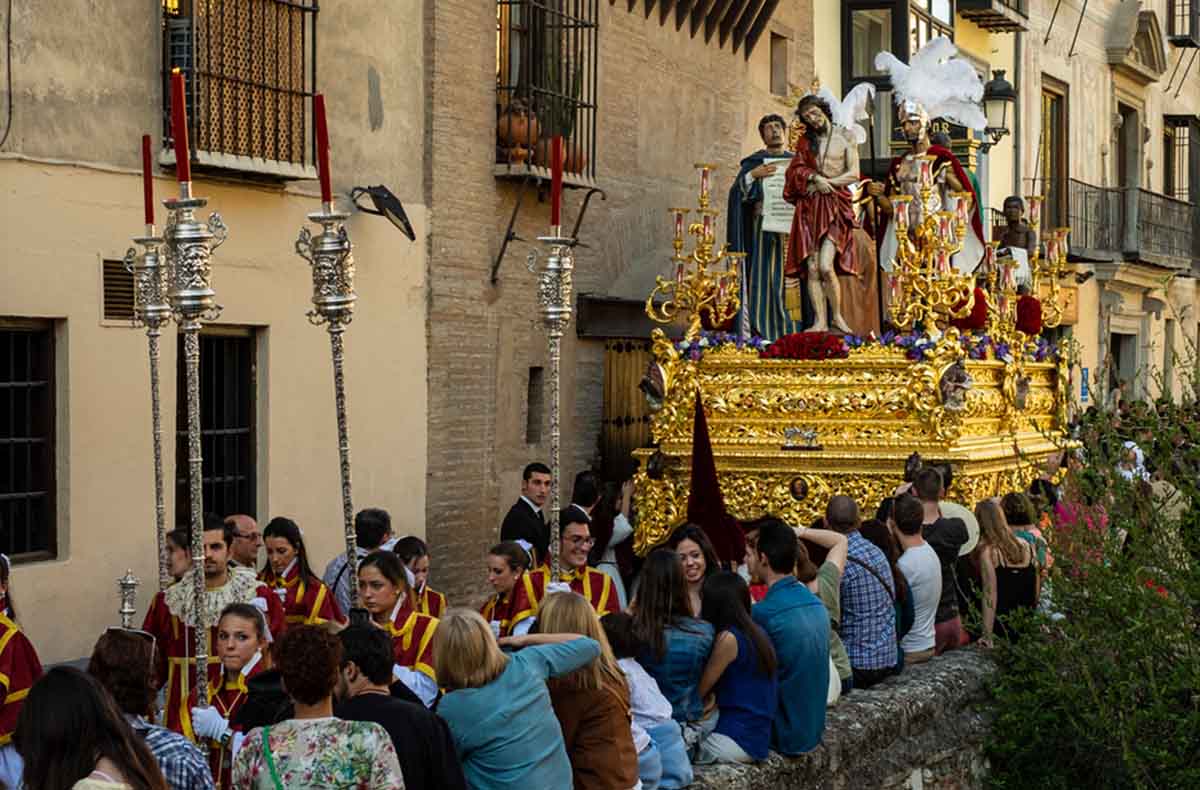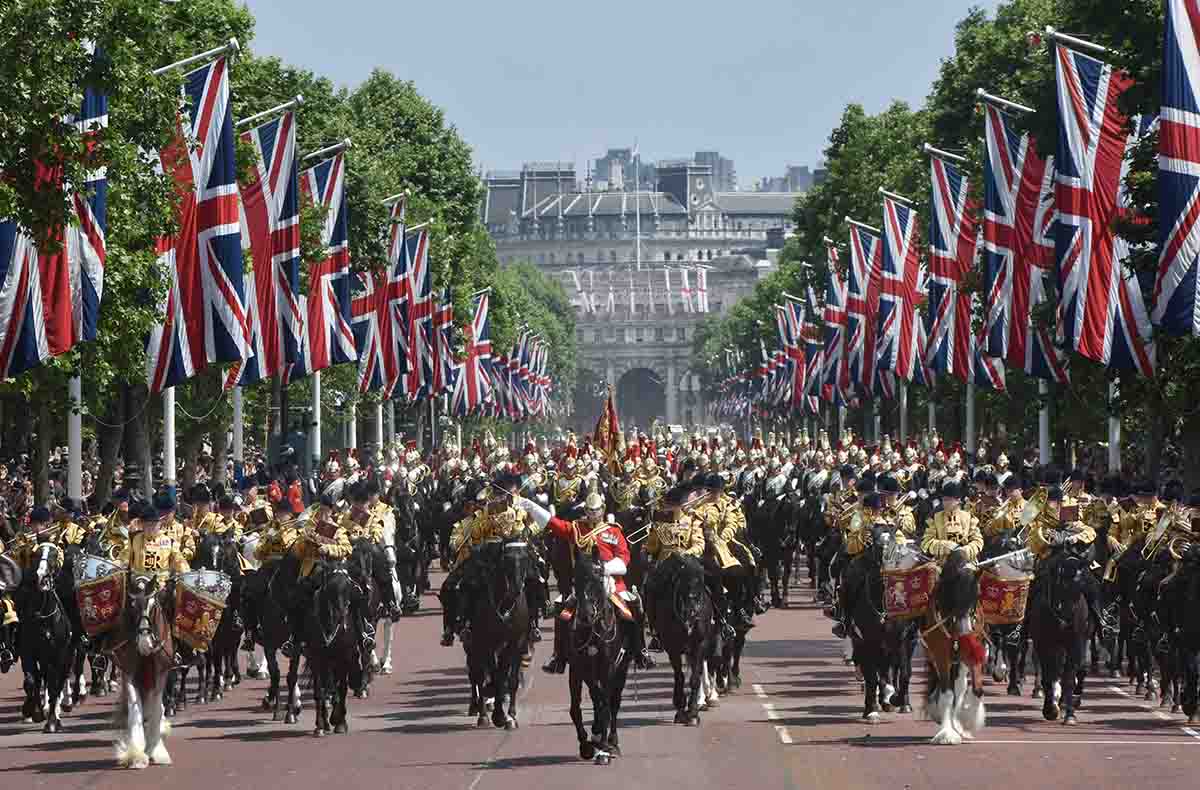
Granada oozes drama. The Andalusian city is breathtaking on its most downbeat days. In the run-up to Easter, the sense of theatre is off the scale.
Few other places combine history with such a stunning setting. The Alhambra is a must-see Moorish complex, which sits on a hill above the town against the backdrop of the Sierra Nevada mountains. Its Nasrid Palaces are a UNESCO World Heritage site, so choose your times to visit carefully. Early mornings outside high summer are best, otherwise, the beauty of the pre-Reconquista Islamic masterpiece can be overwhelmed by industrial, conveyor-belt tourism.
Holy Week brings out the crowds, too, but the experience is much more organic than visiting a monument. Semana Santa, which starts on Palm Sunday, comprises a series of parades representing the Passion of Christ. There are 33 cofradias—brotherhoods—across the city; members carry images of Jesus and the Virgin Mary to the cathedral on floats called pasos decorated with flowers, candles, and elaborate gilt metalwork. They are accompanied by Camareras, women dressed in traditional lace, and Nazarenos, men in robes with pointed hoods covering their faces. Different cofradias have distinctive color schemes to represent their church or neighborhood.
In the gypsy neighborhood of Sacromonte, the residents build bonfires around the cave houses and sing hymns in flamenco style on Wednesday night. Maundy Thursday belongs to the Albaycín, the old Arab quarter, sitting on the hill facing the Alhambra. On Good Friday, one parade marches in silence apart from the beat of a drum; as the paso moves through the narrow streets, the lights are turned off and only candles illuminate the darkness.
These are rituals that go back to the 16th century. They are not an affectation to lure visitors to Granada. It’s a snapshot of Andalusian life, where fiestas play a huge role throughout the year. And the piety, while real, is not oppressive. In the areas where the parades take place, the bars and restaurants are booming.
Nowhere else in Spain makes a fetish of tapas like Granada. Small portions of food are served free with every drink. They can range from a slice of cheese on a piece of bread to strange sausages that come with a boat of inflammable liquid to cook them. The tapas are served as a matter of course. There is normally no need to order. In the areas where tourists rarely stray, a beer frequently arrives with a hefty slab of pork on a bread roll. Anyone on a tight budget can enjoy a night of drinking without having to worry about buying food or going home on an empty stomach.
Complicated undercurrents abound. The surrender of Islamic Granada to the Catholic monarchs in 1492 marked the end of Muslim Spain and led to mass expulsions from the area, but the Moorish influence left an indelible mark on the city’s consciousness. A gypsy sensibility has also helped define the town’s identity. The gitanos have lived in the caves of Sacromonte since the 17th century. At one time, this barrio used to be considered dangerous at night, but now the worst thing that is likely to happen to a tourist is that they are denied a tapa and are forced to endure some substandard flamenco. Nevertheless, the ambiance makes the area worth a visit.
For those seeking authentic flamenco, the answer is in the Albaycín. Peña La Platería is a members’ club where hard-core enthusiasts have been gathering since 1949. It is open to outsiders on Thursday nights, but needs to be booked beforehand. There, the art is elevated to its highest form, uncompromising and raw, the authentic sound of the city.
The man who encapsulated Granada was Federico Garcia Lorca, one of its most famous sons. The poet and playwright was entranced by the Alhambra. As a gay man in the first half of the 20th century, he felt a kinship with the derided gitanos and understood the feeling of being an outsider.
Lorca was detained by Nationalists and murdered in 1936, little more than a month after the outbreak of the Spanish Civil War. He is regarded as a secular patron saint in Granada and his family’s summer home on the fringe of the city is almost a place of pilgrimage.
Lorca was not political, but even he must have seen the growing ugliness in the years before his death. The civil war was underway long before its official outbreak. The poet could have escaped, but he could not leave his mother—or Granada.
The piety and penitence of Semana Santa reflect the guilt and grievances that remain from the days of Franco and the internal convulsions that racked the region within living memory. At the city’s cemetery, just a few hundred yards from the modern entrance to the Alhambra, the exterior wall is still marked by the bullets of Fascist firing squads. On a recent visit, it was disturbing to see that someone had written “Franco” five times on the board explaining the fate of the victims and had crudely attempted to change the first word of the phrase “legal democracy” to “illegal.” Lorca was taken to the hills to the north and his body has never been found, despite the proximity of mass graves in the area. Those sites are frequently defaced, too.
Yet Lorca’s image is everywhere. In Chikito Restaurante in the center of town, there is a statue of him sitting at a table because, as a young writer, he held literary gatherings at the location. It’s incongruous, but Lorca, as much as anyone, understood the incongruity of this magnificent, confused place. The Moors were driven out, but the beauty they created with the Alhambra defines Granada, rather than the austere palace Charles V attached to the delicate Nasrid buildings, or the somewhat brutish cathedral that Christians built over the central mosque.
The rhythms of dispossessed gitanos are the city’s soundtrack. Lorca understood all the conflictions and connections. Flamenco has the perfect word for it: Duende.
Some places have soul. Granada has duende, a darker, deeper, more inexplicable and ultimately more engrossing force. It induces dramatic emotions. Wander its narrow, evocative streets; join the hooded men of Holy Week; listen to the pain of gypsy voices.
If you have duende, you will never want to leave. And you will yearn to return.



